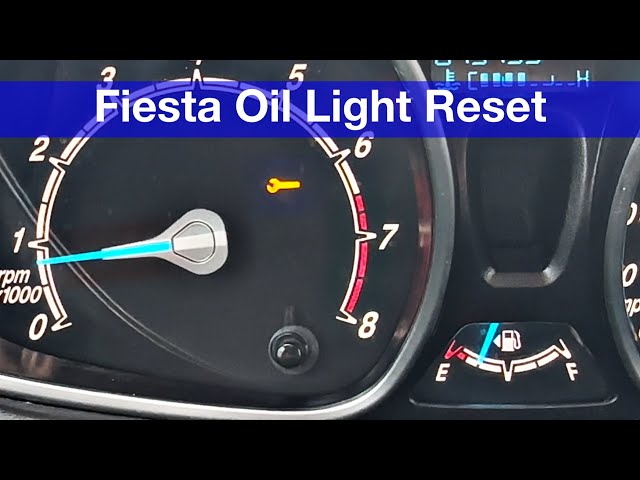What Does The Wrench Light Mean On A Ford

The dreaded wrench light on your Ford dashboard – a symbol that can induce anxiety in even the most seasoned automotive enthusiast. Unlike the universally recognized check engine light, the wrench icon on your Ford signals a specific issue related to the powertrain. It's not necessarily an emergency, but it *definitely* warrants investigation. This article will delve into what the wrench light means on your Ford, common causes, and what steps you should take to address it.
Understanding the Powertrain Malfunction Indicator
Ford officially refers to the wrench light as the Powertrain Malfunction (PM) Indicator. This warning illuminates when the vehicle's computer detects a problem within the powertrain system. The powertrain encompasses all the components that generate power and transfer it to the wheels, including the engine, transmission, and related control modules. Think of it as a catch-all for issues that impact how your Ford performs and drives.
It’s crucial to understand that the wrench light is **not** a substitute for the check engine light. While the check engine light can indicate a wide range of problems, from a loose gas cap to a catalytic converter failure, the wrench light specifically points to powertrain-related concerns. In some cases, both lights might illuminate simultaneously, indicating multiple issues.
Common Causes of the Wrench Light
The potential culprits behind a lit wrench light are numerous, demanding a systematic approach to diagnosis. Here are some of the most frequent offenders:
- Electronic Throttle Control (ETC) Problems: This is one of the most common causes. The ETC system regulates the amount of air entering the engine. A malfunctioning throttle position sensor (TPS) or a dirty throttle body can trigger the light. Symptoms include reduced engine power and erratic idling. For example, a Ford F-150 with a faulty TPS might exhibit surging acceleration or difficulty maintaining a consistent speed.
- Transmission Issues: Problems within the transmission, such as slipping gears, harsh shifting, or a faulty transmission speed sensor, can activate the PM indicator. Low transmission fluid levels can also contribute to these issues. A Ford Explorer experiencing delayed shifting could be signaling a transmission problem.
- Fuel System Problems: While often associated with the check engine light, fuel system issues, particularly those affecting fuel delivery, can sometimes trigger the wrench light. This could include a failing fuel pump, clogged fuel filter, or malfunctioning fuel injectors.
- Sensor Malfunctions: Various sensors play critical roles in the powertrain's operation. A faulty mass airflow (MAF) sensor, oxygen sensor, or crankshaft position sensor can disrupt the engine's performance and trigger the warning.
- Turbocharger Issues (if equipped): On vehicles equipped with a turbocharger, problems like a faulty turbocharger wastegate or a boost leak can activate the wrench light.
What to Do When the Wrench Light Illuminates
When the wrench light appears, the first step is to assess the vehicle's performance. Note any unusual behavior, such as reduced power, erratic shifting, or unusual noises. In many cases, the vehicle will enter a "limp mode," restricting engine power to protect the powertrain from further damage.
Here’s a breakdown of recommended actions:
- Check the Owner's Manual: Your Ford's owner's manual provides specific information about the wrench light and recommended actions.
- Safe Driving: If the vehicle is drivable, proceed cautiously to a safe location. Avoid aggressive acceleration or high speeds.
- Diagnostic Scan: The most crucial step is to have the vehicle scanned by a qualified mechanic using an OBD-II scanner. This will retrieve diagnostic trouble codes (DTCs) that pinpoint the specific problem. AutoZone or Advance Auto Parts will often perform a free scan, but the accuracy and interpretation of the codes are best left to a professional.
- Professional Repair: Once the DTCs are identified, consult with a trusted mechanic for diagnosis and repair. Attempting to fix the problem without proper knowledge and tools can lead to further damage and increased repair costs.
Preventative Maintenance and Long-Term Reliability
Regular preventative maintenance is key to minimizing the risk of encountering the wrench light. Adhering to Ford's recommended maintenance schedule, including regular oil changes, transmission fluid flushes, and air filter replacements, can significantly extend the life of your powertrain and prevent costly repairs. For example, regularly changing the transmission fluid in a Ford Escape can prevent transmission slippage and premature wear.
Ignoring the wrench light can lead to more significant and expensive problems down the road. Prompt diagnosis and repair are essential to maintaining your Ford's performance and reliability. So, don’t ignore that wrench!
